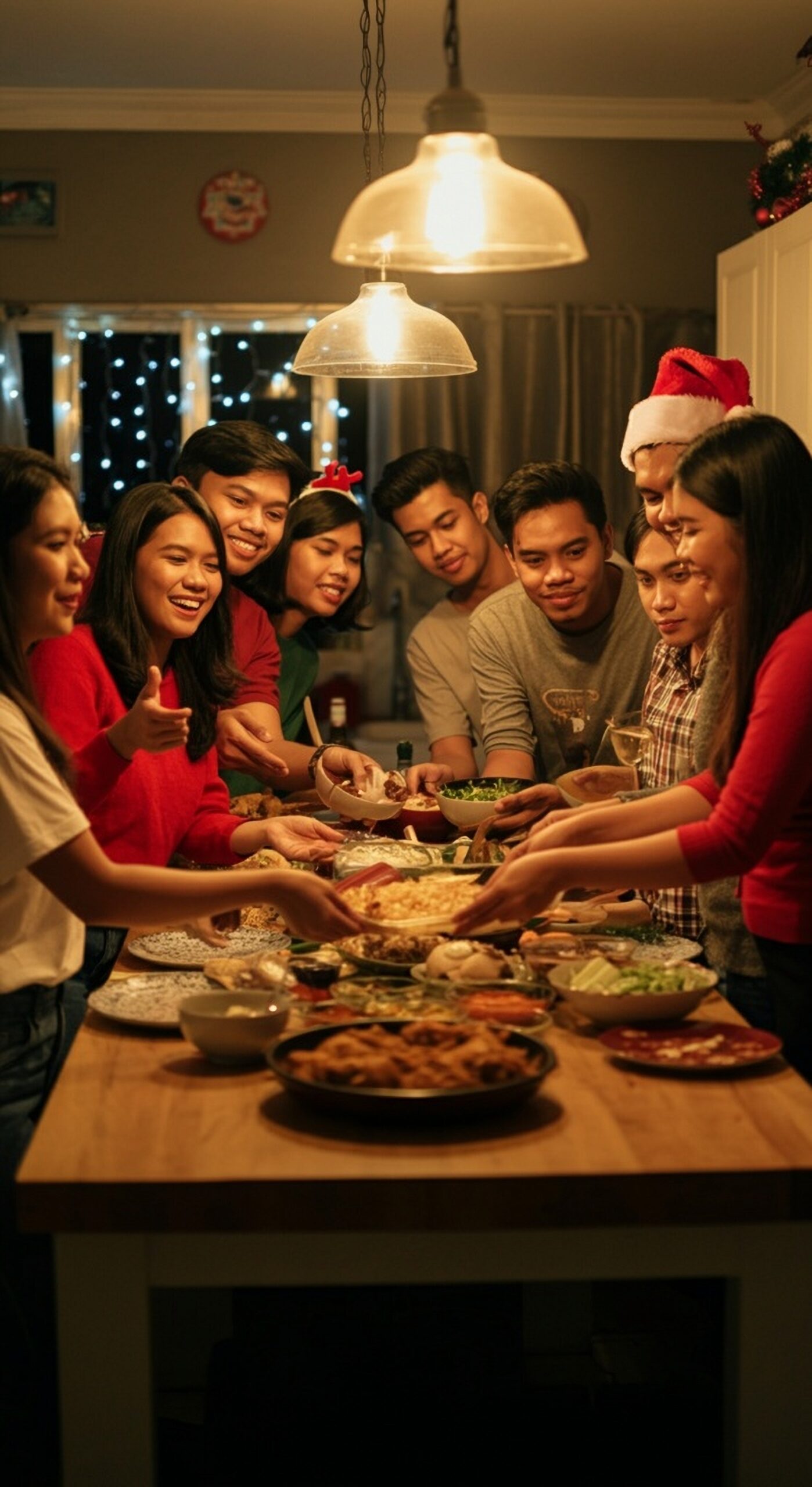In the Philippines, Christmas and celebrating Christmas is more than just a holiday—it’s a months-long celebration that begins as early as September. Known for their vibrant culture and close-knit ties, Filipinos embrace the season with traditions steeped in faith, love, and community. From festive reunions and holiday feasts to Simbang Gabi and caroling, Paskong Pinoy is an unforgettable celebration of family and faith.
Here’s a glimpse of how Filipinos make Christmas merrier and more meaningful:
1. Attending Family Gatherings
The heart of Christmas in the Philippines lies in reconnecting with family. Despite busy schedules and holiday fatigue, Filipinos make an effort to attend reunions, turning casual conversations into heartfelt catch-ups.
Everyone is probably jam-packed with events, but making it to a reunion makes a big difference. True enough, there are days when the holiday burnout is at an all-time high, but attending a family function or two turns the casual chatter into a meaningful catch-up. More importantly, relatives assemble to ring in the coming year, celebrate their heritage together, and give gratitude to what the previous year has presented them with. Close family ties are a common Filipino trait, too, strengthening relationships with significant others and loved ones. Coming home for Christmas, after all, has always been anticipated by many family members, especially those who are employed away from home or abroad.

2. Christmas Decorating and Caroling
Filipinos take holiday decorating seriously. Decking the halls is a true feat that’s celebrated in every household, and each classic Christmas decor truly dresses up the room differently. A range of pieces and props including wreaths and garlands wrap interiors beautifully, along with bold lanterns that light up the space. The Christmas tree, a staple centerpiece, makes an appearance annually, marking “that time of the year.” While, the traditional Belen is mounted at homes, in malls, and in every park elsewhere, too. Signifying the nativity tribute which tells of the newborn story of Jesus Christ; a true display and homage to the scene of His humble birth in the manger.

Adding to the festive spirit is the tradition of caroling. Groups of children and adults alike go door-to-door singing Christmas songs, spreading goodwill and encouraging donations. This activity embodies the season’s themes of generosity and community.
3. A Celebratory Feast on “Noche Buena”
A Filipino Christmas is incomplete without a festive feast. Traditional favorites like lechon, lumpiang shanghai, queso de bola, and holiday ham grace the table, alongside desserts like bibingka, puto bumbong, and leche flan.

Cooking and sharing food is an act of love for Filipino families, who treasure home-cooked meals during the holidays. Other staples like adobo, kare-kare, buko salad, and menudo also make their way to the menu, showcasing the country’s rich culinary heritage.
4. Gift-Giving and Workplace Merrymaking
From Secret Santa or Monito Monita to exchanging gifts at family gatherings and events, Filipinos are fond of getting into the gift-giving game. Ideally, Christmas bonuses come in on or before December 24, blessing employees with extra funds in time for festive celebrations. In the workplace, Christmastime is also marked by merrymaking activities that reward top performers and game winners. Games such as holiday scavenger hunts, costume and performance competitions, and the crowd-favorite raffle draw remind colleagues and friends that amidst all the toiling and everyday grind, there is still room for savoring and enjoying the good times. On some occasions, similarly, Christmas coupons and Noche Buena party packages are awarded to employees, allowing them to take pleasure in year-end promos and super sales.

5. Attending Simbang Gabi
Simbang Gabi, a nine-day dawn mass leading up to Christmas Day, holds deep significance for Filipino Catholics. Families attend the early morning services together, reflecting on faith and preparing spiritually for the holiday. Attendees come together at dawn masses to reflect on the clergy’s homilies, drawing inspiration from the teachings and incorporating them into their daily lives as a spiritual preparation for Christmas.

After mass, churchgoers indulge in traditional treats like puto bumbong and bibingka, sold by street vendors near churchyards. These delicacies add a sweet touch to the early morning tradition.
Mindful Celebration During the Holidays
While Christmas is a time for joy and giving, it’s important to consider the circumstances of others. Financial challenges can make it difficult for some to fully participate in reunions or gift exchanges. Normalizing the idea of skipping gifts or minimizing contributions ensures that everyone feels included without added pressure.
Celebrating with sensitivity and mindfulness fosters a truly inclusive holiday spirit, making the season even more meaningful for everyone.
Final Thoughts
Filipinos make Christmas a time of warmth, joy, and connection through their unique traditions. Whether it’s attending Simbang Gabi, decorating with family, or sharing delicious meals, Paskong Pinoy is a testament to the enduring values of faith, love, and togetherness.
However you choose to celebrate, remember that the true essence of Christmas lies in cherishing moments with loved ones and spreading kindness to those around you.
